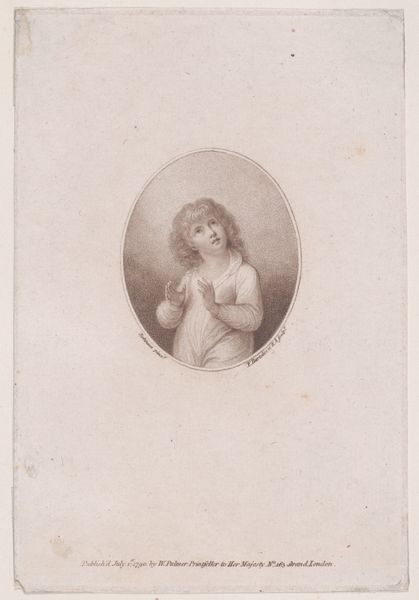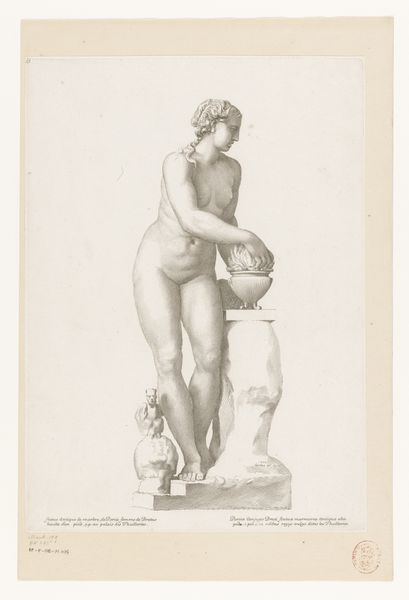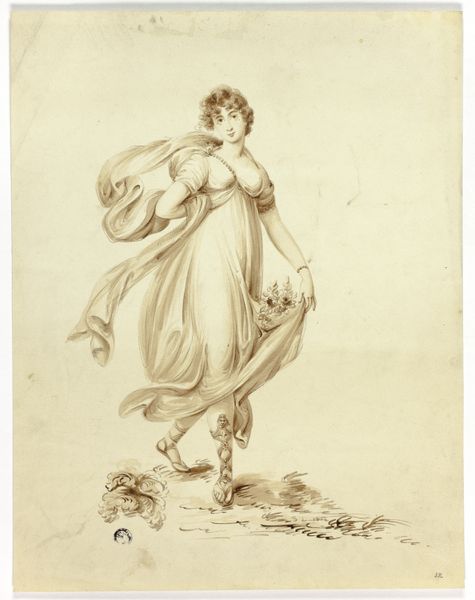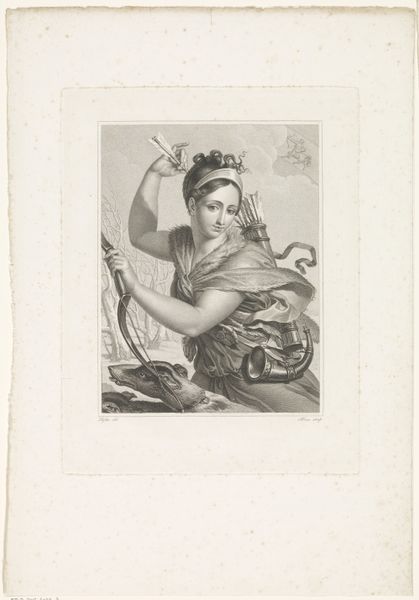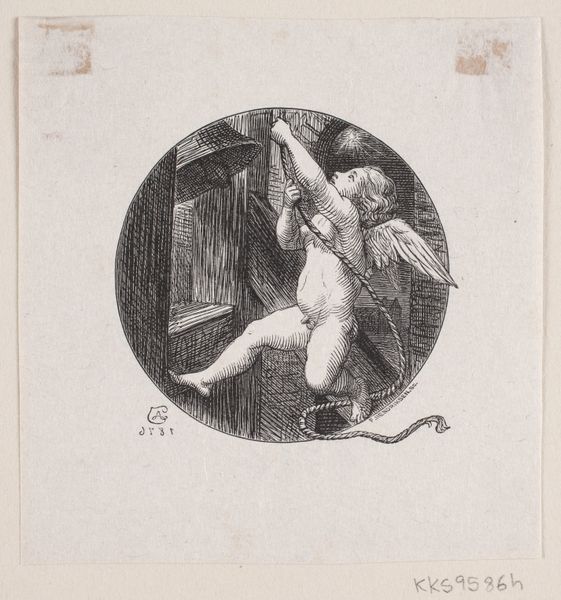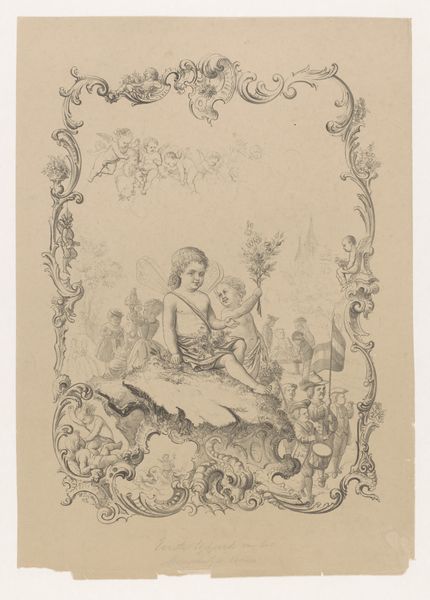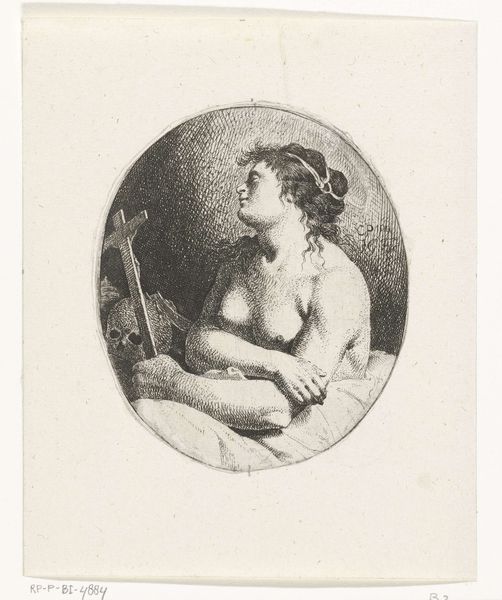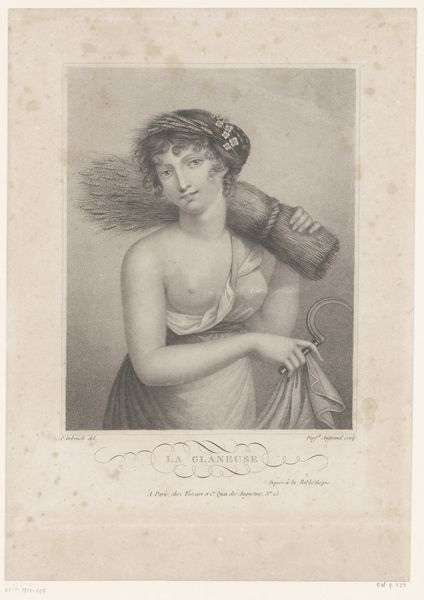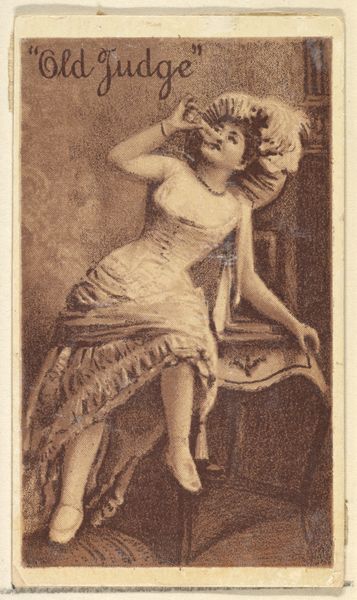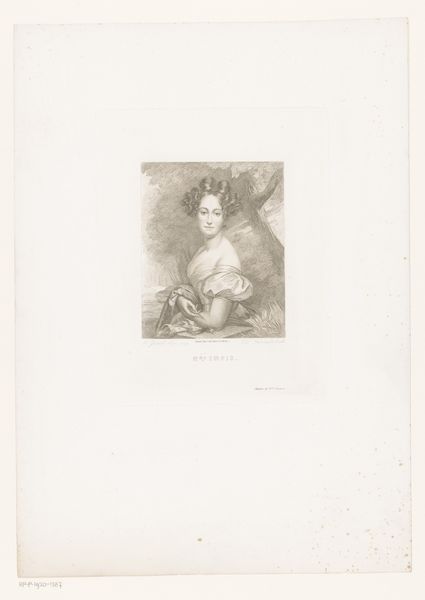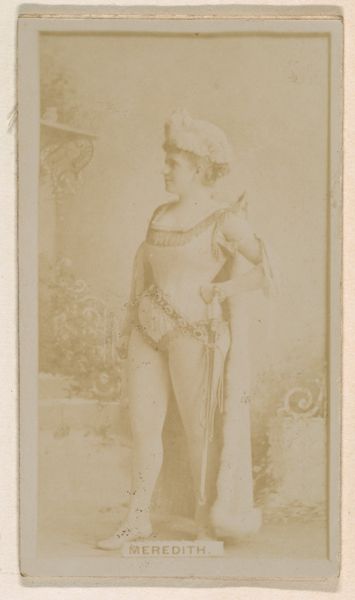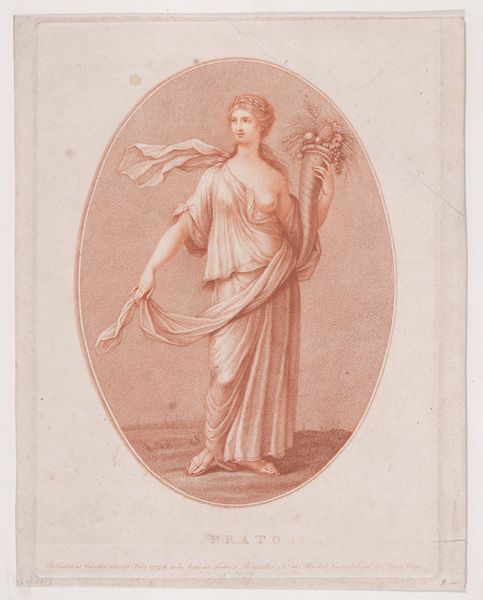
lithograph, print
#
neoclacissism
#
allegory
#
lithograph
# print
#
figuration
#
academic-art
#
nude
Dimensions: height 663 mm, width 503 mm
Copyright: Rijks Museum: Open Domain
Curator: Let's turn our attention to Charles Bargue's "Meisje met tamboerijn rust uit van het dansen," or "Girl with Tambourine Resting from Dancing," a lithograph from 1852. It captures a certain classical stillness. Editor: My first thought is just how serene she seems! Despite the possible frenzy of dance implied in the title, there’s an undeniable sense of calm, maybe even melancholy, in her pose. It’s emphasized by the muted tones and delicate lines of the lithograph. Curator: The artist channels Neoclassicism here. There is an attempt to revive a visual language from antiquity—she’s wreathed in what looks like laurel, referencing ideas about status and cultural identity during the nineteenth century, while suggesting something of a mythic presence, don't you think? Editor: Absolutely, and it’s a loaded gesture. Academic art was always bound up in ideals of beauty and social status, as you mentioned, that reinforced existing power structures. How do we reconcile this image with its possible allusions to female artistic labor, especially given the lack of acknowledgement and the systemic disadvantages faced by female artists during that era? Curator: Well, her lack of exertion, her languid posture does suggest she is someone being looked at, being rendered rather than taking on a role. Consider, also, that lithography itself was becoming increasingly accessible. This allowed for broader dissemination of imagery, shaping and reinforcing archetypes that reached beyond elite circles. Editor: It also speaks volumes about accessibility—of representation itself. Who had the 'right' to be depicted, and how? This lithograph is clearly working with established conventions to define femininity. But her gaze seems... complicated. Curator: It does, it’s knowing but ambiguous. Perhaps, in that ambivalence, Bargue gives her an agency we might otherwise miss. Editor: So, is it fair to suggest the work offers space, perhaps unintentionally, for more critical questioning of beauty, representation, and gender roles? Curator: Perhaps that’s what makes this such an enduring image. Thank you, those considerations really unlock this artwork for me. Editor: And thank you. I find myself returning to this moment, questioning assumptions around this 'resting' female figure and the cultural expectations embedded within such images.
Comments
No comments
Be the first to comment and join the conversation on the ultimate creative platform.
